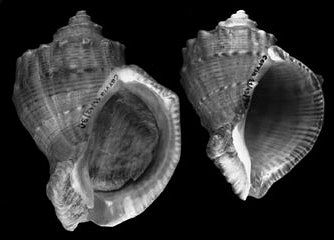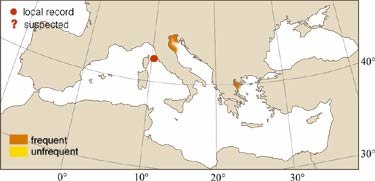
|
Relevant Synonyms
Misidentification
|
|
| photo: S. Gofas / Coll. G. Spada |
|
SHORT
DESCRIPTION
color :
grey to brownish with irregular darker blotches or flames, which tend to make an interrupted pattern on the cords. Aperture orange inside.
common size :
specimens from the Far East up to 180 mm, Mediterranean and Black Sea specimens usually less than 120 mm. |
DISTINGUISHING CHARACTERISTICS
BIOLOGY / ECOLOGY
habitat :
subtidal at 12-14 m depth (Aegean Sea); favours compact sandy bottoms, burrows almost completely, with only the siphon sticking out. |
|
1st
Mediterranean record
|

|
|
DISTRIBUTION
|
ESTABLISHMENT SUCCESS
speculated reasons for success :
|
|
|
MODE OF
INTRODUCTION |
IMPORTANCE TO
HUMANS |
|
KEY
REFERENCES
|
|
|
 Rapana thomasiana Crosse, 1861
Rapana thomasiana Crosse, 1861